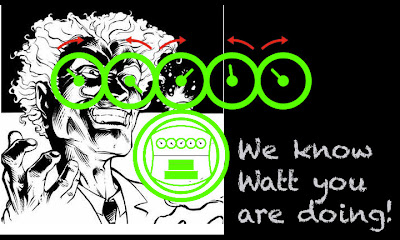The down side of social not-working…
Many of the most popular applications, or “apps,” on the social-networking site Facebook Inc. have been transmitting identifying information—in effect, providing access to people’s names and, in some cases, their friends’ names—to dozens of advertising and Internet tracking companies, a Wall Street Journal investigation has found.
The issue affects tens of millions of Facebook app users, including people who set their profiles to Facebook’s strictest privacy settings. (more)
via Cult of Mac…
“There’s no other way of saying this:
Camera Camouflage is sneaky. It’s a camera app that goes out of its way to avoid looking like a camera. It disguises itself as an incoming phone call. You can even instruct it to activate your phone’s ringtone, so you can pretend to take the call and hold the phone to your ear. At which point, things get even sneakier. Camera Camouflage is activated by your voice. When you start speaking, it takes a photo. To onlookers, you’re just answering a phone call.
You can keep talking, and keep snapping, for as long as you want.” (more)
…So, the problem of cell phone interception is real, growing and unlikely to be eliminated in the foreseeable future.
For an organization, knowing that phone calls have been intercepted at all is difficult. There is rarely a test that can be done, other than looking at the consequences of a lost deal or secret information in the public domain. In fact, in 2010, the Ponemon Institute found that 80 percent of CIOs admitted they would not find out directly if they had been intercepted.
The problem shows a wide geographical variation, both in the number of instances and in the public perception of risk.
In the United States and mainland Europe, the perception of risk is relatively low. However, travel to Latin America or some parts of Asia, and the perception of an issue has reached the consumer with advertisements on mainstream television for protection equipment.
Yet few executives traveling around the world have taken special measures to secure their cell phone conversations.
Research from ABI shows that 79 percent of companies’ cell phones were routinely used to discuss information that, if intercepted, would lead to material loss to the business.
Yet less than one in five had in place adequate measures to address this risk. (
more)
New book coming soon…
Stay tuned for details.
PA –
A suburban Pennsylvania school district accused of spying on students using school-issued laptops has agreed to pay $610,000 to settle litigation stemming from its controversial practice.
Under the proposed settlement, the Lower Merion School District will pay $185,000 to two high school students who had sued the district earlier this year for allegedly snooping on them.
The remaining $425,000 will go to attorneys fees. (
more)
Back in 2007, when the Dutch government announced that all 7 million homes in the Netherlands would be equipped with smart meters by 2013, it anticipated little resistance. After all, who wouldn’t welcome a device that could save both energy and money? But consumers worried that such intelligent monitoring devices, which transmit power-usage information to the utility as frequently as every 15 minutes, would make them vulnerable to thieves, annoying marketers, and police investigations. They spoke out so strongly against these ”espionage meters” that the government made them optional…

Of more than 9000 consumers polled in 17 countries, about one-third said they would be discouraged from using energy-management programs, such as smart metering, if it gave utilities greater access to data about their personal energy use…
It all sounds less paranoid when you consider that each appliance—the refrigerator, kettle, toaster, washing machine—has its own energy fingerprint, or ”appliance load signature,” that a smart meter can read. Anyone who gets hold of this data gets a glimpse of exactly what appliances you use and how often you use them. (more)



